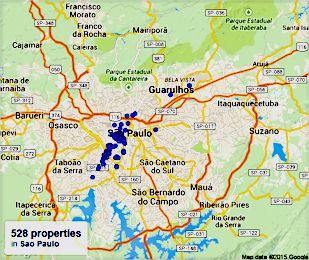» BRAZIL • Discover Brazil • Southeast Brazil • Sao Paulo
Discover Magical Sao Paulo
Historic downtown Sao Paulo is at turns gritty and pleasantly surprising, while AvenidaPaulista retains its status as the essence of urban modernity. Rua Augusta pulses as the epicenter of underground nightlife and Vila Madalena offers classic Brazilian samba and socializing. Don't be afraid to dive in.

A | B | C | D | E | F | G | H | I | J | K | L | M | N | O | P | Q | R | S | T | U | V | W | X | Y | Z
» Altino Arantes Building (Banespa Tower)
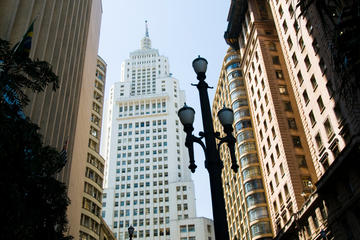
An enduring symbol of São Paulo's 20th century race to modernity, the Edifício Altino Arantes-more commonly known as the Banespa Tower or Banespão-remains one of the most notable landmarks on the city's exhaustive skyline. Originally built as the headquarters of the State Bank of São Paulo (Banespa) and named for one of the bank's first presidents, the tower rose over an eight-year period, crowning the city as its tallest building in 1947, a title held for the next 18 years …
» Atlantic Forest (Mata Atlântica)
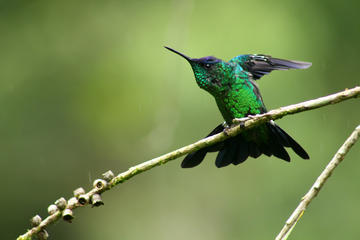
The Atlantic Forest, or Mata Atlantica Biosphere Reserve, covers 14 states and spreads over more than 20,000 acres in Brazil. It's formed of the remnants of a larger terrestrial ecosystem that once ran down the country's eastern coast, extending 3,000 km from Rio Grande do Norte to the Argentine border and as far inland as Paraguay. Located within the biosphere reserve are the urban parks of Tijuca National Park in Rio de Janeiro and Cantareira State Park in Sao Paulo …
» Avenida Berrini
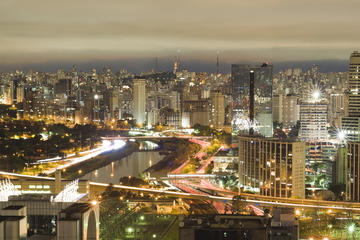
Developed in the late 1970s as an off-price alternative to the sky-high rents along Avenida Paulista, Avenida Berrini (pronounced be-HEE-nee) has given its name to a district of modern high-rise office and residential towers which host the headquarters or regional offices of several multinational corporations. Part of the neighborhood of Brooklin - yes, you read right - Berrini also houses a growing number of shopping and entertainment areas, including American-style malls …
» Avenida Paulista
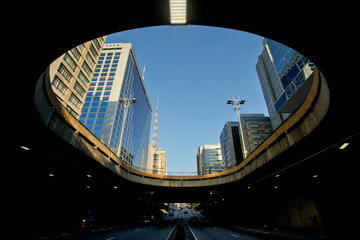
One of the most expensive strips of real estate in Latin America, Avenida Paulista is São Paulo's most iconic thoroughfare. What started out as a residential street lined with the ornate neoclassical mansions of 19th-century coffee barons has, in a little over a century, turned into an urban canyon of glass and steel and a modern hub of business, culture and entertainment. Anchored on one end by busy Shopping Paulista mall and on the other by multi-use architectural standout Conjunto Nacional …
» Banespa Tower

An enduring symbol of São Paulo's 20th century race to modernity, the Edifício Altino Arantes - more commonly known as the Banespa Tower or Banespão - remains one of the most notable landmarks on the city's exhaustive skyline. Originally built as the headquarters of the State Bank of São Paulo (Banespa) and named for one of the bank's first presidents, the tower rose over an eight-year period, crowning the city as its tallest building in 1947, a title held for the next 18 years …
» Cantareira State Park

Covering nearly 20,000 acres and rising out of northern São Paulo, Cantareira State Park (Parque Estadual da Cantareira) is one of the world's largest patches of tropical rainforest that's within a city. A popular spot for escaping the hustle and bustle of the city on the weekend, visit Cantareira early on a Saturday morning to leave the crowds behind, then take your pick between the park trails which vary in length from 300 meters to 10 kilometers. Split into four quarters - Pedra Grande, Águas Claras, Engordador, and Cabuçu …
» Coffee Palace
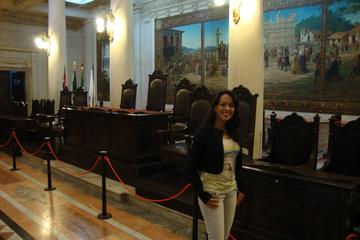
Near São Paulo, the port city of Santos is home to Brazil's Coffee Palace. Opened in 1914, it served as the hub of Brazil's booming coffee industry, where traders determined the daily price of Brazil's main export until the '50s, effectively making the Coffee Palace South America's version of the New York Stock Exchange. Today, the main floor of the Coffee Palace houses the Museo Do Cafe - dedicated to the history and importance of the building and coffee in Brazilian culture. Exhibits tell visitors about the coffee economy …
» Embu das Artes
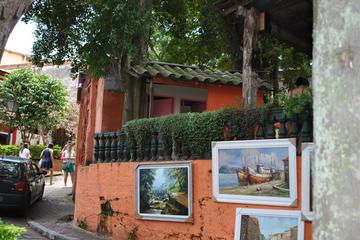
Known simply as Embu to most, the town of Embu das Artes, just outside São Paulo, was founded in 1554, and by the 1930s Embu was already making a name for itself as an artists' hub. Come at the weekends to enjoy the Arts and Handicrafts Market. Launched in the late '60s, it's been popular ever since. This open-air fair extends along Embu's cobbled streets in the historic town center, and there are 940 exhibitors all in all, with thousands coming each weekend to pick-up arts and crafts, food and clothes …
» Football Museum
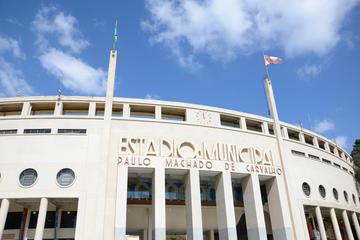
Located inside Estádio Municipal Paulo Machado de Carvalho (a soccer stadium located in the Pacaembu neighborhood of Sao Paulo), the Museum du Futebol (Football Museum) is a 6,900-square-meter museum dedicated to the history and importance of soccer in Brazilian culture. The museum is located underneath the bleachers, and was constructed over 13 months and inaugurated in 2009. Valued at USD $12 million, the Museum du Futebol has 16 rooms of permanent exhibits, as well as several temporary exhibitions …
» Guarujá
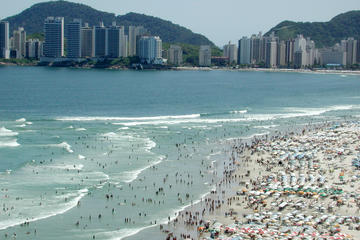
Nicknamed "The Pearl of the Atlantic," the Brazilian city of Guarujá hosts the closest stretch of beach to São Paulo, making it a wildly popular weekend destination among Paulistanos. A total of 23 beaches stretch across the city front. And being right in the heart of downtown, Pitangueiras is the most popular beach - it's near Avenue Puglisi where there's a shopping mall, and local artisans sell their handicrafts at the nearby plaza on weekends and holidays. Guarujá Enseada is another lively beach with tons of kiosks …
» Hotel Unique
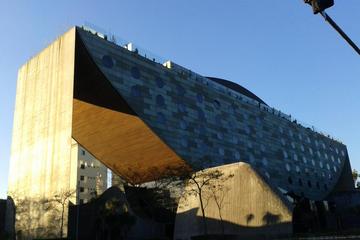
With its striking crescent shape, Sao Paulo's iconic Hotel Unique has been said to look like many things - a copper half-moon, the hull of a ship...but locals just call it 'the watermelon.' Designed by the Brazilian-Japanese architect Ruy Ohtake and renovated in late 2012, the luxury 95-room hotel has won numerous design awards. Critic Paul Goldberger even hailed the building as one of the seven wonders of the modern world. Based in Jardim Paulista near Sao Paulo's version of Central Park, Ibirapuera …
» Ibirapuera Park
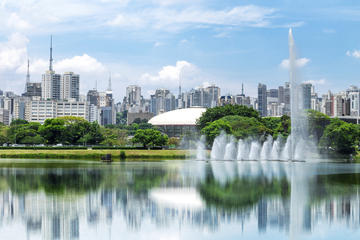
Sao Paulo's version of NYC's Central Park, leafy Ibirapuera Park was opened on the 400th anniversary of the city, in 1954, and it's known as much for its museums and music hall as it is for its jogging and cycling paths by the lake. The park buildings were designed by the modernist Oscar Niemeyer, known for designing Brasília's public buildings. Covering 2 square km, Ibirapuera is the largest park in central Sao Paulo and the second largest in the city. Designed by landscape architect Roberto Burle Marx …
» Itaim Bibi

Comprised of a dense clutch of upscale commercial and residential high-rises, the district of Itaim Bibi encompasses a delightful mix of high-end restaurants and shops to satisfy the after-work cravings of the many thousands of working stiffs in the area, as well as visitors staying in the district's hotels and extended-stay rentals. Crisscrossed and bounded by major thoroughfares such as leafy Avenida 9 de Julho, business mecca Avenida Faria Lima, and commercial hub Avenida Presidente Juscelino Kubitschek …
» Italian Building
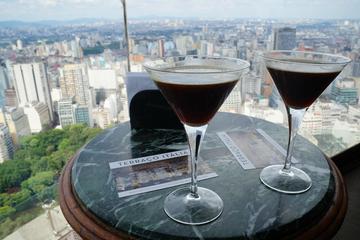
Standing 168 meters tall, São Paulo's Italian Building (Edifício Itália) is the second-tallest structure in the city after Mirante do Vale. Built between 1956 and 1965, it's famous for its 360-degree-views which you can see for yourself on a trip up to the Terraço Itália restaurant and piano bar, or even further to the 41st floor rooftop viewing terrace. With the city spread out 500 feet below, and soft jazz playing in the Noble Room piano bar, this is most definitely the spot for celebrating a special occasion …
» Jardins District

São Paulo's most exclusive destination, the Jardins District, is really a combination of the neighborhoods Jardim Paulista, Jardim América, Jardim Europa, Jardim Paulistano, as well as parts of Cerqueira César that extend southwest of Avenida Paulista - the city's main avenue of skyscraper offices. Aptly for a district where the name translates to 'gardens,' Jardins is famous for its green space, with many of its huge stucco villas and modern glass mansions surrounded by lawns and pools …
» Liberdade
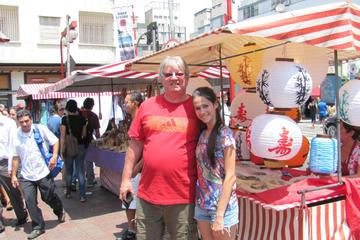
Home to the world's largest Japanese population outside Japan, the Sao Paulo district of Liberdade is a densely-populated neighborhood that's a popular spot for locals and tourists looking to get a taste of Japanese culture and cuisine in Brazil. Liberdade was settled in the early to mid-20th century by Japanese immigrants brought to Brazil to work in the coffee plantations around Sao Paulo. Since 1970, many people of other Asian ethnicities, especially Chinese and Koreans, have also moved into the area …
» Martinelli Building
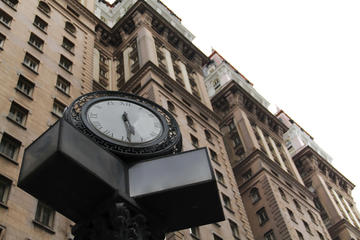
Standing 130 meters tall in the heart of São Paulo, the Martinelli Building was the city's first skyscraper. Built in 1929 with 12 floors to begin with, the remaining 18 floors you see today were completed by 1935. A beautiful building that would look right at home in Chicago, the Martinelli Building was built by Italian immigrant-turned-business tycoon Giuseppe Martinelli, who arrived in Brazil in 1889. To prove to a skeptical public that the skyscraper was actually safe, he and his family actually lived in the top four floors …
» Mercado Municipal
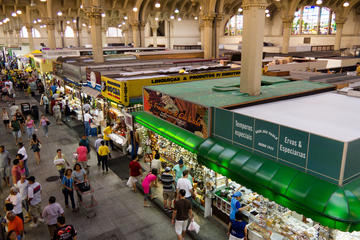
Situated in a vast but lovely neoclassical structure and first opened in 1933, the Mercado Municipal de São Paulo - known colloquially as the Mercadão - houses hundreds of stalls selling fresh fish, strange fruits and every other edible delectable you can imagine. Originally built near two rivers which allowed for the easy transport of goods from the agricultural interior of São Paulo state to market in the capital city, the Mercadão now sits in a built-up but run-down corner of central São Paulo …
» Monastery of Sao Bento
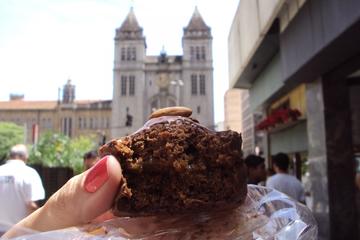
In Sao Paulo's downtown, the Monastery of Sao Bento is known for its Gregorian chanting, exceptional bakery, and beautiful frescoes. To catch the medieval chants of the monks, head to the 10am Sunday mass - get there early for a good seat. If you come for Sunday service, you'll also get to hear the 6,000 pipe organ being played. For cake, jams, cookies, and breads prepared and blessed by the monks, look for the bakery to the left of the main hall. It's a little more expensive than regular bakeries …
» Pacaembu Stadium
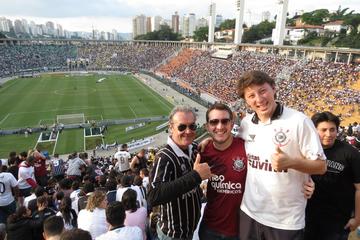
Three kilometers east of downtown São Paulo, the Pacaembu Stadium is a traditional Brazilian soccer stadium that opened in 1940. With a capacity of almost 40,000, Pacaembu was long home to one of the country's top clubs - The Corinthians, who have now moved to a new stadium 25 km east of Pacaembu, which was built for the 2014 World Cup. Since 1961, the stadium's official name has been Estádio Municipal Paulo Machado de Carvalho, after the founder of Brazilian TV network Rede Record …
» Republic Square (Praça da República)
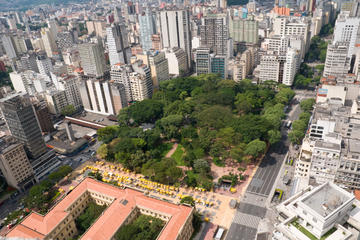
A rectangular eye at the center of the urban hurricane that is São Paulo, Praça da República might have seen better days, but the plaza still holds on to its importance as a focal point for cultural life in the city. Built in 1889 to commemorate a new era in the city's expansion and development, Praça da República served as the primary location for concerts, political protests, and other large gatherings. Perched within the otherwise tree-shaded plaza is the former Caetano de Campos School …
» Sé Cathedral
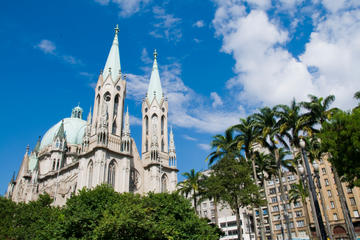
Lording over the heart of the city, the immense Metropolitan Cathedral of Our Lady of the Assumption - abbreviated to Catedral da Sé in reference to its status as the seat of the local Roman Catholic archbishop - almost seems out of place with its mid-century Modernist neighbors. In fact, the current neo-Gothic structure is the third incarnation of the cathedral, the first church having been established in 1589. Designed by German architect Maximilian Hehl in 1912, construction on the current church began the following year …
» Theatro Municipal
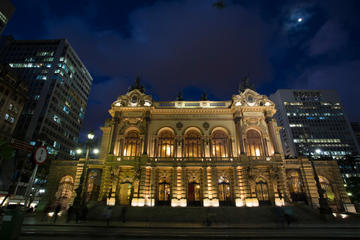
Situated grandly atop downtown São Paulo's Vale do Anhangabaú like a concrete wedding cake, the century-old Theatro Municipal still shines as an example of the city's place at the vanguard of art in Latin America. Opened in 1911, the ornate showplace - styled in the tradition of the great European opera houses - has welcomed Maria Callas, Isadora Duncan, Duke Ellington, and Mikhail Baryshnikov, and Ellington to its stage. A recent multimillion-dollar renovation has restored the grandeur of the structure …
» BRAZIL • Discover Brazil • Southeast Brazil • Sao Paulo





